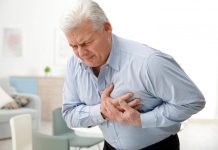There’s no one-size-fits-all way to know why you have a headache at a certain spot on your head. Different people may experience headaches differently, including where they strike and how intense the pain is. Pain on the top of your head could mean several things, and you’ll want to watch for other symptoms that may suggest what’s going on and the reason for it.
Tension Headaches
If your headache feels like it’s at the top of your head, it may be a tension headache. Sometimes, tension headaches are called “hatband” headaches because they can cause pain in your forehead, temples, and the back of your head, similar to the sensation of wearing a tight hat. And the pain may feel like pressure.
Tension headaches are the most common type of headache. It’s not always clear what causes them, but it may be that tension builds in your muscles when you hunch over your computer for hours or pin your phone to your ear with your shoulder. Stress or anxiety may also cause tension to build in the muscles in your neck, face, jaw, and scalp.
A hot shower, warming pad, and over-the-counter (OTC) meds can help. Regular exercise along with meditation and other relaxation practices might stop tension headaches before they start.
Migraine
A throbbing pain starts small and builds, sometimes to very high intensity. It’s usually on one side of the head, but it may also include some or all of the top of your head. Everyday movements such as household chores and walking can make it worse.
During a migraine, you may be more sensitive to light, noise, and smells, and you could get nauseous enough to vomit. Another common sign is an “aura” that looks like flashing lights or waves that you see just before or during a migraine.
It’s often hard to tell what causes a migraine, but doctors do know of some triggers — hormone changes, stress, anxiety, sleep problems, strong odors, tobacco, and missed meals. Trigger foods include coffee, wine, chocolate, aged cheeses, pickled goods, and processed meats. Talk to your doctor about lifestyle changes that can help lessen or prevent migraine.
When you have a migraine, resting in a quiet, dark room can help bring relief. It also might be good to drink some caffeine and get plenty of fluids, especially if you’re vomiting. Your doctor might suggest or prescribe medication that will work best for you.
Cluster Headaches
The “cluster” refers to the way these types of headaches repeat, almost daily, sometimes for weeks at a time.
These headaches tend to be very painful, on one side of the head behind the eye, and happen at the same time of the day. Though the pain doesn’t usually start on the top of the head, it could radiate there as the headache gets worse.
You may have a migraine-like aura and nausea just before each one. Pain usually peaks 5-10 minutes after it starts and can last up to three hours. Your nose and eyes may get red and swollen on the headache side, and you may be anxious and sensitive to light, sounds, or smells.
Their cause usually isn’t clear, but sleep problems, alcohol, and smoking set off these headaches in some people. You may also be more likely to have cluster headaches if you’ve had a head injury before. Talk to your doctor about treatment.
Hypnic Headaches
Sometimes, this type of headache is called the “alarm clock” headache, because it happens while you’re sleeping and wakes you up, usually at the same time each night.
The pain from a hypnic headache may feel dull, but it can range from mild to severe. And you can usually feel it on both sides of your head. A hypnic headache can last 15 minutes to four hours.
Hypnic headaches are rare, and they usually affect people between 40-80 years old. If you think you have hypnic headaches, you should see a doctor to make sure the headaches aren’t caused by another medical issue.
Treatment for hypnic headaches may include taking caffeine at bedtime, melatonin, or flunarizine.
Brain Freeze
When you eat or drink something cold, such as ice cream or a frozen drink, you might get a brain freeze, also called an ice cream headache or a cold stimulus headache. It can be an intense pain at the front of your head, but it usually goes away quickly — within a few seconds to two minutes.
Sometimes, you can get a brain freeze from breathing in freezing air, too. A brain freeze happens when blood vessels around your palate react to the cold by tightening up and then expanding quickly, which causes pain. Although the blood vessels are around your palate, you feel the pain higher up in your head.
Usually, a brain freeze doesn’t last long. But if you find yourself with a headache from brain freeze, it might help to drink a liquid that’s warm or at room temperature, or to press your tongue against the roof of your mouth. To prevent a brain freeze, you can try to eat or drink very cold food and drink slowly so that the cold in your mouth or throat isn’t so sudden.
Credit: webmd.com









